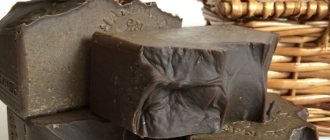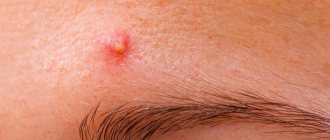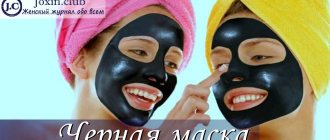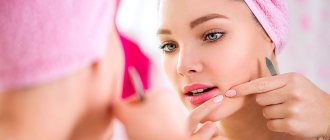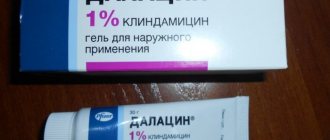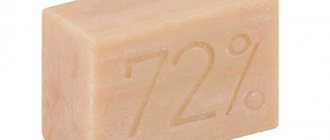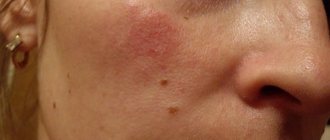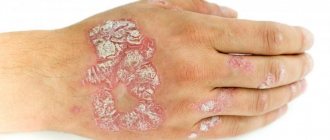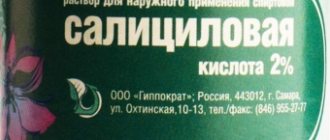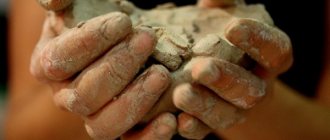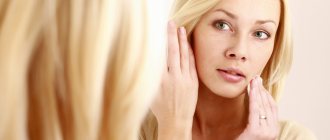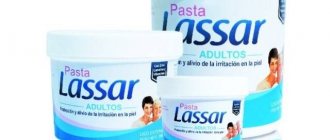Reviews of tar soap for acne note different reactions to such a product. There are not many lucky people in the world who avoided acne in their youth and even in their more mature years. They do not look aesthetically pleasing and greatly annoy the unfortunate owner of a pimply face.
[contents]
Having seen a pimple, many try to get rid of it as quickly as possible. Without the time and funds to visit a cosmetologist, many recklessly trust the advice of neighbors and friends.
Soap with tar has miraculous properties against acne. Is it so? You can verify this by reading reviews with before and after photos. Let's look at its properties.
The healing properties of birch tar
Birch tar has long been used as an anti-inflammatory and antifungal agent, as it contains more than 10,000 substances that have a positive effect on the body.
| Chemical component of tar | Effect on the body |
| Phytoncides | They have bactericidal properties and increase immunity |
| Organic acids | Affect the acid-base balance, stimulate the regenerative functions of the body |
| Resins | Supporting skin microflora |
| Guaiacol | Antipruritic and drying properties |
| Creosols | Antiseptic, antiparasitic properties |
The pharmaceutical industry uses birch tar to make medicines used in the treatment of skin diseases. Tar is included in the composition of multicomponent liniments and ointments - Vishnevsky, Wilkinson.
What is useful in tar soap?
As the name suggests, the composition contains tar.
But if you read the label, it will become clear that there is not much of it at all - only one tenth. Everything else is banal laundry soap. But even this 10 percent is in the composition in order to smell the specific smell emitted by tar. Since childhood, we have all known the smell of Vishnevsky ointment or Wilkinson ointment. Yes, there is tar there too.
Our great-grandfathers and great-grandmothers also used these ointments. And the products are really effective, thanks to the substances contained in tar, such as phytoncides.
Tar is neutralized by viruses, fungi and bacteria.
This is the healing secret of tar.
https://www.youtube.com/watch?v=FSyt8Koz_74
Areas of application of tar soap
Soap has a disinfecting and healing effect, so its use will be useful for:
- treatment of pediculosis;
- mycoses of the legs;
- dermatitis, eczema, psoriasis;
- preventive intimate hygiene, treatment of thrush;
- diseases of the scalp (seborrhea);
- prevention of colds (lubrication of the nasal passages);
- treatment of acne (acne);
- excessive sweating to normalize the activity of the sweat glands.
Contraindications
The use of tar soap and masks based on it is prohibited in case of kidney disease and individual intolerance. In order to avoid a possible allergic reaction, be sure to conduct a test before using the product for the first time. Apply a small amount of foam to your wrist and wait a few minutes. If there are no signs of irritation, you can safely use it on your face.
The use of soap is not recommended on aging skin. This is due to the fact that it is too thin and does not produce enough sebum. Tar can dry it out and cause new wrinkles to appear.
Thus, tar soap can help a person suffering from acne and blackheads. If your skin needs a deep cleanse, try this natural and affordable remedy. It is effective against inflammation and irritation, tightens pores and normalizes sebum secretion. Gradually it will completely transform your skin.
Tar soap for acne: how to use
Soap dries out the skin, making it indispensable for treating acne. The product is quite aggressive, so using tar soap requires following certain rules:
- Treatment should be carried out daily for at least 14 days.
- During the treatment period, it is not recommended to use scrubs and alcohol lotions.
- The procedure with tar soap should be completed by applying moisturizer to the face.
- Do not use the product to treat thin, dry facial skin.
- Before initial use, do a test on the inside of your wrist - soap can cause an allergic reaction.
For prevention, it is enough to wash your face with tar soap for acne.
The regularity of washing with tar soap depends on your skin type:
- normal and mixed type – 1 time per day;
- oily skin – 2 times a day;
- dry skin – 3 times a week.
The soap has a specific smell, which quickly disappears after being washed off the skin.
The product can also be used to prepare masks and applications.
Tar soap mask for acne
The procedure is recommended for profuse acne with purulent contents. In a non-metallic bowl, beat a small amount of thick soap foam and apply to the face for 5 minutes, without touching the orbital area of the eyes. As the foam dries, you may experience a feeling of “tightening” of the skin - this is a normal reaction of the body to the healing components of tar. After leaving the mask for the required time, rinse off first with warm and then with cold water.
Mini-applications for single acne
For small rashes or single acne on dry or normal skin, it is not necessary to cover the entire face with foam so as not to dry out healthy skin. In this case, you can make applications separately for each acne. To do this, you need to cut a thin strip of dry soap, apply it to the desired area, and then use foam soap to secure the dry strip on your face. You can seal it with a piece of napkin and leave it overnight. It is good to apply such applications to acne that has just appeared, then by the morning they usually disappear and the redness decreases.
Foam procedure for treating acne on the body
To treat acne on the body, it is enough to use tar soap foam instead of regular shower gel. To do this, use a soapy washcloth to treat areas of the body with acne in a circular motion. You can leave the foam for a few minutes, then rinse off the soap and take a contrast shower.
Mask “Clean Skin” for comedones (blackheads)
1 tsp. edible gelatin pour 1 tbsp. l. hot water, leave for 15 minutes to swell. 1 tsp. Add liquid tar soap to the gelatin solution, mix carefully, without foaming if possible. The consistency of the mask should be thick. Apply to face, leave for 10 minutes. If the mask is completely frozen, it must be carefully rolled up using upward movements. If the mask does not roll off, it can be washed off with water at room temperature. To narrow the pores, cleared of comedones, you should then wash your face with cold water.
The mask should not be used for pustular nodules and inflamed papules.
Side effects
In general, there are no special contraindications or adverse reactions for this drug. But there are some disadvantages:
- Tar has an unpleasant odor. Therefore, after washing your hair, it is recommended to rinse your hair with water with a few drops of vinegar added. In addition, the specific smell is easily masked with the help of perfume.
- It dries out the skin and causes allergies if there is an individual intolerance to the substance. You should not use this product every day. A few times a week is enough for prevention.
Making anti-acne soap at home
It is not difficult to make tar soap yourself. This product will have a less aggressive effect on the skin, while maintaining its healing effect. When using homemade soap, there is no overdrying of the epidermis and no peeling.
To make a homemade product you will need:
- a piece of unscented soap;
- 2 tbsp. l. pharmaceutical birch tar.
Grate the soap, place the shavings in a water bath and melt. Pour 50 ml of water into the liquid mass, stirring. Over low heat, bring the soap mass to a sticky state, pour in 2 tbsp. l. tar, mix. To soften and aroma the soap, if desired, you can add 1 tsp to the hot mass. honey, 0.5 tsp. peach oil or herbal decoction instead of water. Cool to room temperature, pour into molds - silicone or children's for sand. Leave until completely hardened at room temperature for 2-3 days. The soap is ready!
The only drawback of the home remedy is that it doesn’t lather well. But this problem can be solved simply - when soaping, you should use a cosmetic facial sponge.
An effective tightening and cleansing tar mask
Tar soap has not only antibacterial properties. It also has a tightening effect, which helps prolong the youthfulness of the skin. Such masks are indicated for women with aging facial skin.
A mask based on tar soap will help get rid of the so-called “bulldog cheeks.”
To do this, you should properly prepare the mask, as well as complete a full course of skin restoration. The mask can be used to care for the face, neck and décolleté area. If your skin is dry, you should add cream or sour cream to the mask.
See also
The best anti-wrinkle mask after 60 years - pamper your skin
Mask recipe:
- Prepare soap shavings.
- Beat the shavings while slowly adding water.
- Apply the finished foam to problem areas of the skin.
- Allow the first coat to dry, then apply the second coat.
- Leave the mask until completely dry.
- Wash off with summer water.
After applying the mask, you should use a moisturizing or nourishing cream. After using the mask for two weeks, the result will be noticeable.
The effectiveness of acne treatment with tar soap
Among the many expensive modern acne medications, tar soap is a natural product that can be used to deal with acne on a budget. But we should not forget that soap only treats the external manifestations of the disease. If the internal cause of the disease is not eliminated, then acne will appear in new lesions. It is necessary to consult a dermatologist and, if necessary, undergo tests to determine the cause of the disease. This could be a hormonal imbalance, an excess of testosterone or estrogen in the body, taking hormonal medications, lack of sulfur, or taking steroids. Having adjusted the internal balance in the body, it will not be difficult to remove residual external manifestations of acne with the help of inexpensive medicated soap.
Removing blackheads from the nose. Causes of blackheads on the nose
Blackheads or open comedones are the result of overworking of the sebaceous glands. Excess sebum production leads to clogged pores. If the upper layer of the epidermis is not removed, sebum is not able to come out. This causes oil to remain on the skin surface and clog the pores. If an infection joins the process, a purulent pimple forms. The following conditions can trigger excessive sebum production:
- Hormonal imbalance. Puberty is characterized by increased formation of blackheads and pimples due to unstable hormonal levels.
- Lack of proper skin care. Skin contamination due to improper cleansing or lack thereof contributes to clogged pores. Excessive cleansing disrupts the pH of the skin. To compensate for this, she begins to produce increased amounts of sebum to protect herself. It is important to select cosmetic products depending on your skin type.
- Poor nutrition. Frequent consumption of fatty, hot, smoked, spicy foods leads to disruption of the gastrointestinal tract. This is expressed not only in pain, but also in the production of large amounts of sebum. Long-term constipation occurs due to impaired intestinal motility. Eating enough fiber will help you cope with this. It is recommended to include vegetables, fruits, and whole grain products in the diet.
- Hereditary predisposition. Having skin prone to increased sebum production has a genetic predisposition. If relatives have a similar feature, there is a high probability that future generations will encounter a similar problem.
- Bad habits . Smoking and alcoholism help speed up the body's metabolic processes. This leads to an increase in the rate of sebum production and clogged pores with the formation of blackheads.
Reviews about the use of tar soap
Does tar soap help with acne? Like any product, tar soap has positive and negative reviews from patients treated with it. Negative reviews come from patients who try to treat only external signs, driving the problem itself inside the body.
If the treatment is structured correctly, there will definitely be positive results. Before consulting a dermatologist, you should try to independently remove the cause of acne - this could be the abuse of sweet, fatty, fried foods, fast food snacks, excessive consumption of beer and strong alcohol. Sometimes it is enough to remove these excesses, and new acne lesions no longer appear. In this case, tar soap helps against acne.
The positive aseptic properties of tar soap in the treatment of acne, reduction of oily shine and disinfection of purulent acne rashes easily outweigh the minor side effects of its use. Minimal cost, ease of use and good treatment results make tar soap for acne a very popular remedy. Birch tar has come to our time from time immemorial, but has not lost its relevance to this day, against the backdrop of synthetic and chemical medications. This is a medicine that Nature itself gave to people. Get treatment and be healthy!
Spot application on inflamed acne
Some dermatologists recommend using soap spot-on, as a mask. How to do it? Everything is quite simple. Apply generous foam to the inflamed, ripening pimple, then leave it for 10-15 minutes. After washing off the soap suds, you can notice the result achieved quite quickly - the size of the inflammation will decrease, and the redness will subside significantly.
If we are talking about more abundant acne, then you can use another method. To do this, cut off a small piece of soap, apply it to the affected area and seal it with an adhesive plaster on top. In this case, the lotion should be left on the skin for at least two hours, or you can even do it overnight. At the end of the procedure, treat the area with cream. By making such a lotion, you can eliminate even small boils.
What are the benefits of tar face masks?
Due to its unique properties, tar is used in medications for the treatment of diseases such as eczema, acne, and demodicosis.
“Russian oil” effectively removes dead cells from the surface of the skin, penetrating deeply into the skin, and helps eliminate inflammatory processes from the inside. Improves blood circulation, accelerates regeneration processes. It is the strongest natural antiseptic, destroys bacteria, parasites and fungi. It has a beneficial effect on the condition of the sebaceous glands and eliminates excess oily skin.
Compound
The traditional recipe for this cosmetic product consists of two components: nine parts of toilet soap with or without fragrances and one part of birch tar, which is a substance of plant origin. It is tar, that is, tree resin, that gives the product a specific smell, and also has properties that are unique in their benefits for the skin.
Modern manufacturers may include different components in tar soap. As a rule, they are sodium salts of fatty acids. The wrapper may contain a designation such as Sodium, implying plant extracts. Safety for skin in need of treatment of inflammation and acne is ensured by the gentle composition of the product:
- Plant extracts;
- Purified water;
- Birch tar.
The following substances can act as auxiliary components:
- Amino alcohol to neutralize the effects of active substances such as tar and sodium salts on the skin, as well as to optimize the dermatological pH balance;
- Thickener to improve the consistency, structure and stability of a cosmetic product;
- Acids such as citric or benzoic as binding ingredients that form a protective film.
In order to cleanse the skin from acne and inflammation, a minimal set of components in soap is more suitable. Products enriched with auxiliary ingredients may be allergenic and cause irritation to vulnerable sensitive skin. A more effective option is the most natural composition without fragrances, however, if the smell of tar is too difficult to tolerate, you can use a product with the aroma of chamomile or green tea.
Rules for using tar for the face
Like any cosmetic product, tar has a number of indications and contraindications for use. By following them, you can achieve optimal results and not harm yourself.
| Indications for use | Contraindications |
| Oily skin | Very dry irritated skin |
| Acne, inflammation, pimples | Individual intolerance to tar |
| Fungal diseases | Stay in bright sunshine after use |
| Dermatitis | |
| Scabies | |
| Diathesis | |
| Demodicosis |
Methods of using tar for cosmetic and medicinal purposes
- Wash For washing, tar is added to liquid soap or gel. Then wash as usual. You can also use tar soap.
- Cream with tar Another way to use “Russian oil” is cream. To prepare such a cream, you need to add a few drops of tar to a regular, easily absorbed cream. The cream is ready.
- Milk with tar Add tar to cosmetic milk, then use the resulting mixture on the affected areas of the skin. Effective against acne, pimples, inflammation.
- Pure tar for the treatment of acne Pure tar is applied to acne with a cotton swab or disk. This method of using tar is not suitable for dry skin, as it dries the skin very much.
- Lotion This recipe is suitable only for oily skin. The lotion dries out the skin very much. To prepare the lotion, tar is mixed with alcohol in a ratio of 1 to 10.
- Tar face mask Depending on the problems being solved, there are many masks with tar. Each will be discussed separately below.
